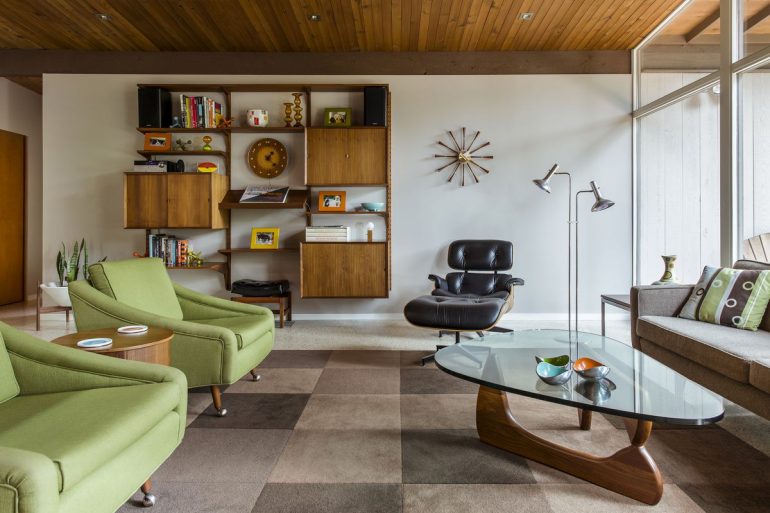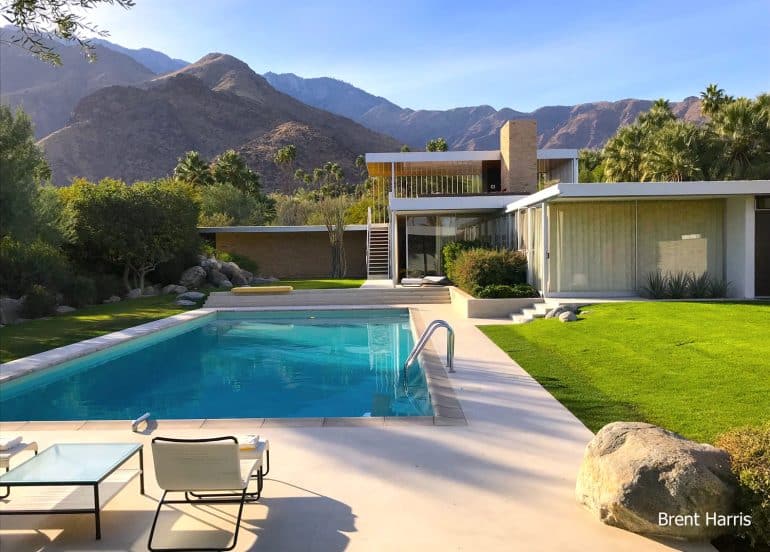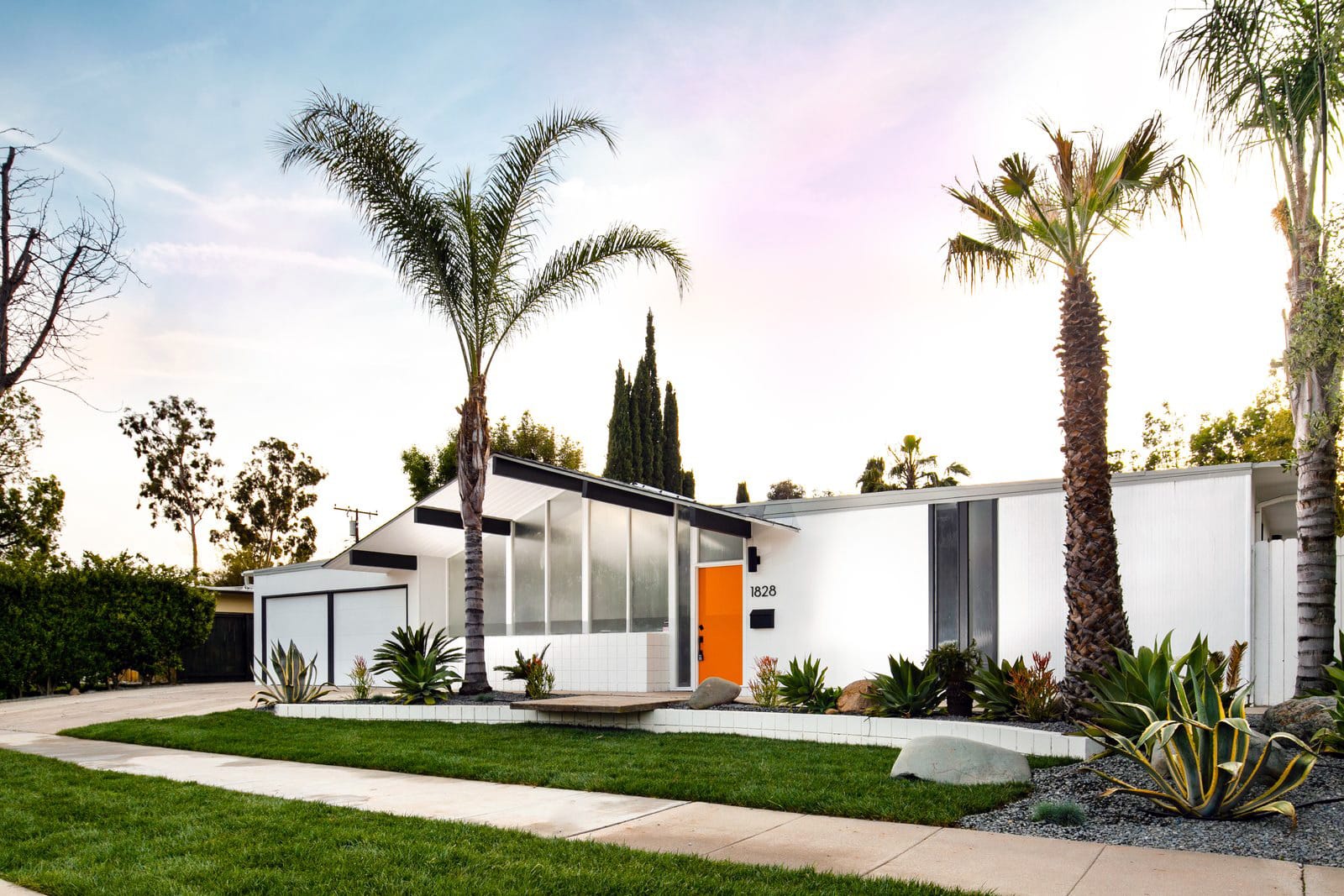What Is Modernist Architecture?
What was the dominant style of architecture through most of the 20th century? It was what we call “modern” or “modernist” architecture.
Indeed, modern architecture actually covers a whole range of sub-styles with some common elements.
In this guide, we are going to explore some of those features and styles along with the history of modern architecture and some of the most important names to know.
We will also discuss the use of modern materials, and some options for bringing modernist design into your own home.
Modernist Definition
It isn’t easy to give a simple definition of modernist architecture. Perhaps the broadest way to explain it would be that it is a range of similar functionalist styles incorporating innovative (at the time) construction methods and materials.
You can scroll to the sections on features and materials for a more in-depth explanation, but first, let’s give a little background so you can place modernism within its historical context.
History of Modern Architecture
It was around the turn of the 20th century that modernist architecture started to really gain traction, but its roots actually date back a few decades before that.
As early as the 1850s, we were seeing structures with modernist principles and materials at play such as the famous “The Crystal Palace” from the Great Exhibition of 1851.
As materials such as reinforced concrete, plate glass, steel and cast iron began to become more readily available, they opened up new avenues for builders.
Building larger structures became easier and more economical; these materials were lightweight, yet strong. This also made it possible to build vertically more effectively than ever before. So along with more spacious structures, we also started to see taller ones.
Fueled by the Industrial Revolution, society was also starting to transform, with more people looking toward the future and wanting to get away from the past.
As a result, new aesthetic styles were emerging to counter architectural schools such as Beaux Arts and Neoclassical. Modernism was among them.
Modernist architects and designers prided themselves in creating forms that were at once practical, beautiful, and utterly different from what came before.
Who Are Some Famous Modern Architects?
There are many notable modern architects, but here are some useful names to know:
- Frank Lloyd Wright
- Walter Gropius
- Marcel Breuer
- Ludwig Mies van der Rohe
- Richard Neutra
- Charles and Ray Eames
- Eero Saarinen
- Louis Kahn
- I. M. Pei
As you explore some of the buildings that these architects are known for, you will start to get a grasp of some of the design principles that distinguish modern architecture.
Features of Modern Architecture
Speaking of design principles, here are some features that many modernist buildings have in common:
- Functionalism. This is the belief that “form should follow function”—though not necessarily that the two should be at odds. Indeed, form as function, properly executed, can be quite beautiful. Functionalism became a larger feature of modernism following WWI. Social reforms in the wake of the war called for buildings that would efficiently serve their purposes and lead to greater quality of life for the masses.
- Modern materials. These include glass, steel and others, and were foundational to what made modernism possible. See the section below for more detail.
- Scale. The advent of lightweight, strong materials like glass and steel meant that many architects were pushing the envelope when it came to scale, creating larger, loftier, more open structures. For this reason—and also because of its underlying philosophy of pragmatic efficiency—modernism was ideal for creating public buildings.
- Minimalism. Many previous architectural styles were dominated by elaborate ornamentation. Modern architects rejected such adornments, opting for a more minimalist look.
- Geometric forms. In a way, the structure of modern buildings was itself the “ornamentation.” By choosing clean, simple surfaces devoid of embellishments, architects focused the eye on the shapes comprising their structures instead, emphasizing the beauty of geometry.
- Open floor plans. Many modern buildings feature wide open interiors with a flow of space from room to room.
- Lots of white. While a variety of colors do show up in modern architecture, quite a few structures were simply white, gray, or other neutral colors.
Modern Architecture Materials
Many different materials were used in modern architecture, but here were some of the most important ones:
- Glass. One of the key inventions that spurred the development of modern architecture was the invention of cast plate glass in 1848. Huge windows were finally possible as a result of this innovation.
- Cast iron: Thanks to the advancements of the Industrial Revolution, cast iron became a cost-effective building material. That being said, its time was relatively short-lived in that it was largely the predecessor to steel, which took over after the turn of the century.
- Steel: Stronger and lighter than cast iron, steel became the dominant metal in architectural design during the 20th century. These attributes freed up architects to explore design possibilities that simply would not have been realistic with cast iron.
- Reinforced concrete: There are a variety of ways this composite material may be made, but typically, it is by adding steel rebars prior to the setting process. Reinforced concrete is both strong and versatile.
Subsets of Modern Architecture
Modernism in architecture styles took a wide variety of forms over the decades. Indeed, here are some sub-styles to be aware of:
- International Style: This style of architecture is also called “internationalism.” Some people use the term interchangeably with modernism, but it is actually a subset that rose to prominence during the 20s and 30s, and remained popular up until the 70s. It was developed in Europe, particularly in France, Germany, and Holland. Common elements include lightweight, high-volume structures, whites or neutral colors, modular shapes and flat planes. Most surfaces tend to be concrete or glass.
- Art Deco: Technically, this is not a modernist style, but it overlaps enough that it is worth discussing. Quite a few materials are the same, as well as some of the overall shapes and forms. Where art deco differs enough to be considered separate is with respect to the bright colors many structures and designs featured as well as the elaborate ornamentation.
- Streamline Moderne: A kind of marriage between international style and art deco, this style gained ground in the 30s after interest in deco fizzled (social and political changes were calling for more understated styles). The sleek lines and forms of art deco are present in this style, but white and gray concrete dominate instead of bright colors. There is a lot of glass, and the sharper corners prominent in art deco were replaced by more rounded corners.
- Bauhaus: “Bauhaus” refers to the style that came out of Walter Gropius’ Staatliches Bauhaus art school in Germany from 1919 to 1933. Directors who followed Gropius included Hannes Meyer and Ludwig Mies van der Rohe. Bauhaus structures were designed to be practical and cost-effective. While the school shut down with the rise of the Nazi party, its influence on mid-century modern architecture cannot be overstated.
- Brutalism: This style of architecture derived from modernism, and was also called “new brutalism.” Its inception was in Britain in the 50s, and the pragmatic, cost-effective nature of the structures was motivated by the goal to reduce housing costs and make other social reforms following World War II. The buildings feature concrete and brick, white or neutral tones, and blocky shapes. Ironically, despite the progressive aims of brutalism, the style is highly evocative of totalitarian imagery for many people, who shy away from it as a result. While some people see beauty in the pragmatism of the buildings, others find them hideously oppressive to behold. Few schools of architecture have been quite so divisive.
- Expressionist: This whimsical German style was popular between 1910 and 1925. While it is similar in many respects to other modernist styles, you will notice it involves more curves and organic shapes than others. Indeed, while it lacks the ornamentation of art nouveau, it shares its love for natural, flowing lines.
- Constructivist: The constructivist style of modernism originated in 1921 in Russia, just a few years after the Russian Revolution and right before the inception of the Soviet Union. The style was popular through 1931. Buildings that were designed in the constructivist style featured geometric forms and highly experimental ideas.
Exploring each of these modern styles in detail is well worth your time. You will find that there were many beautiful structures in each category. Every one of them tells a story about the time and the place where it was built and the philosophies that were influencing not just design, but social structure as a whole.
What Came After Modernism?
While modernist houses and public buildings spent decades in the spotlight, eventually, a change was inevitable. What supplanted modern styles?
The answer is postmodern architecture. This new style started to show up in the 60s, rising in popularity as modernism declined.
Although modernism had a lot going for it, there were plenty of people who took umbrage at its minimalism and rigidity, its set against the past, and its perceived repetitious nature.
Postmodern architecture broke away from modernist constraints. As architect Robert Venturi put it, postmodernism was, “an architecture of complexity and contradiction must embody the difficult unity of inclusion rather than the easy unity of exclusion.”
As a result, you may find more variation between one postmodern building and another, or even within a single structure.
This style featured more color than modernism did, and forms that were more often fragmented, oblique or asymmetric (though asymmetry factors into many modernist buildings as well).
Whereas modernism tends to be a more serious style, postmodern architects sometimes infused their structures with a sense of humor.
How Can You Bring Modernist Design Into Your Life?
If you are shopping for a home and you are lucky enough, you might manage to purchase one that features modernist architecture, or at least elements of it.
Another possibility is to build your own home in a modernist style. For example, you could look for floor plans in a modern farmhouse style, or hire an architect to draft up custom plans for you.
Not in the market for a new home? You can give your existing home a bit of mid-century modern flair with MCM house numbers.
You don’t need to stop with the exterior, either. Modernism wasn’t just a style that architects adhered to; modernist furnishings and décor also became popular during the 20th century.
Indeed, some of the architects that we have talked about in this article also designed furniture. One example is the iconic Barcelona chair designed by Ludwig Mies van der Rohe and Lilly Reich.
This beautiful chair embodies the same principles as Bauhaus architecture, and was designed for the German Pavilion at the 1929 Barcelona International Exposition.
In fact, you can even purchase a high-quality replica of this very chair.
As another example, Eero Saarinen, the architect is best known for designing the Gateway Arch in Saint Louis, also designed a number of chairs.
These include the Tulip chair, the Womb chair, and the Grasshopper lounge chair and ottoman, among others. You can find beautiful replicas of these chairs as well.
So, even if you do not live in a modernist building, you can bring a nostalgic MCM vibe to your living room, study, or any other part of your home or office.
You can find out more about some of these furnishings and where to buy MCM replicas by continuing to explore our site. Enjoy learning about modernist architecture and design and incorporating it into your home.



